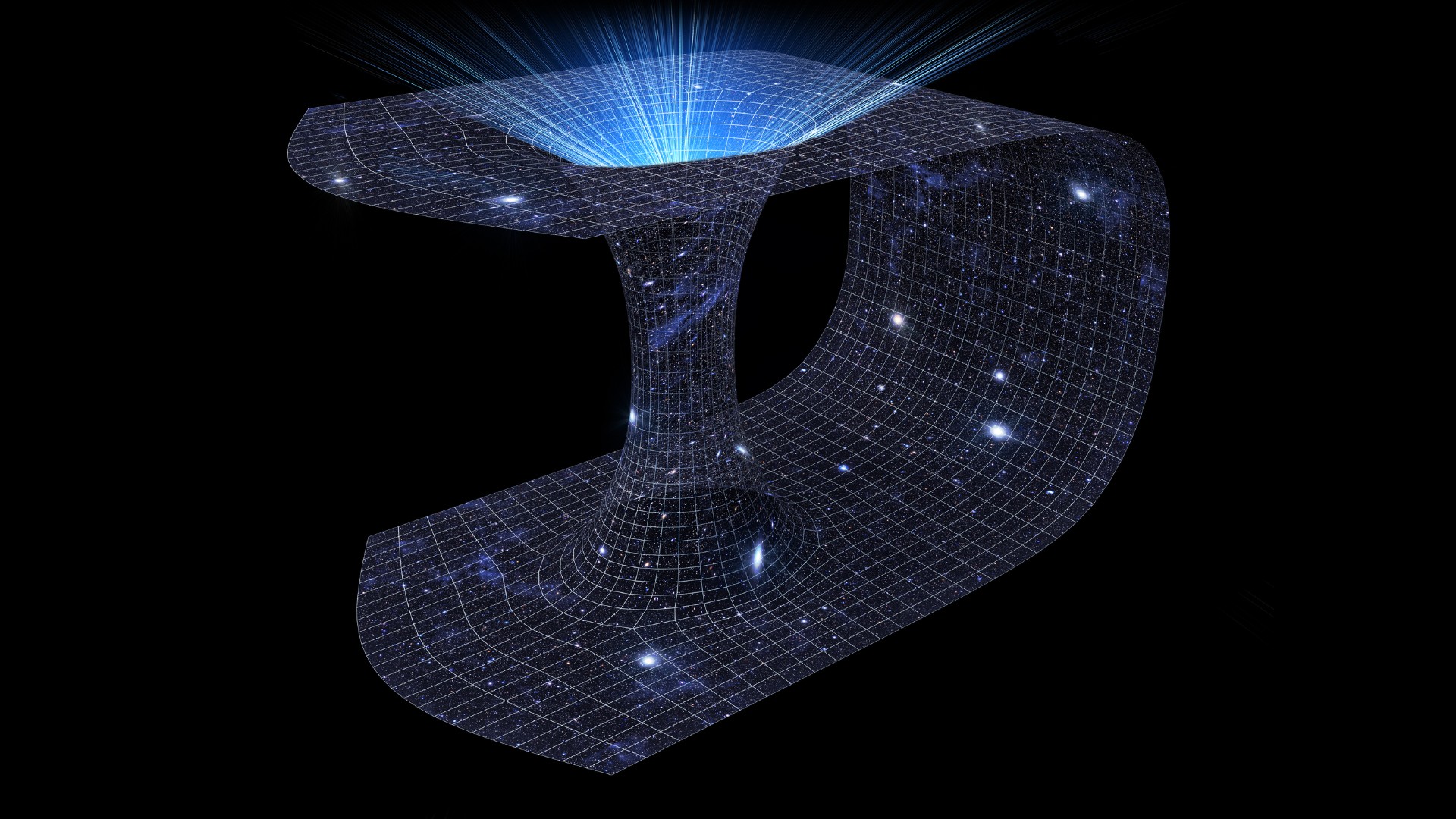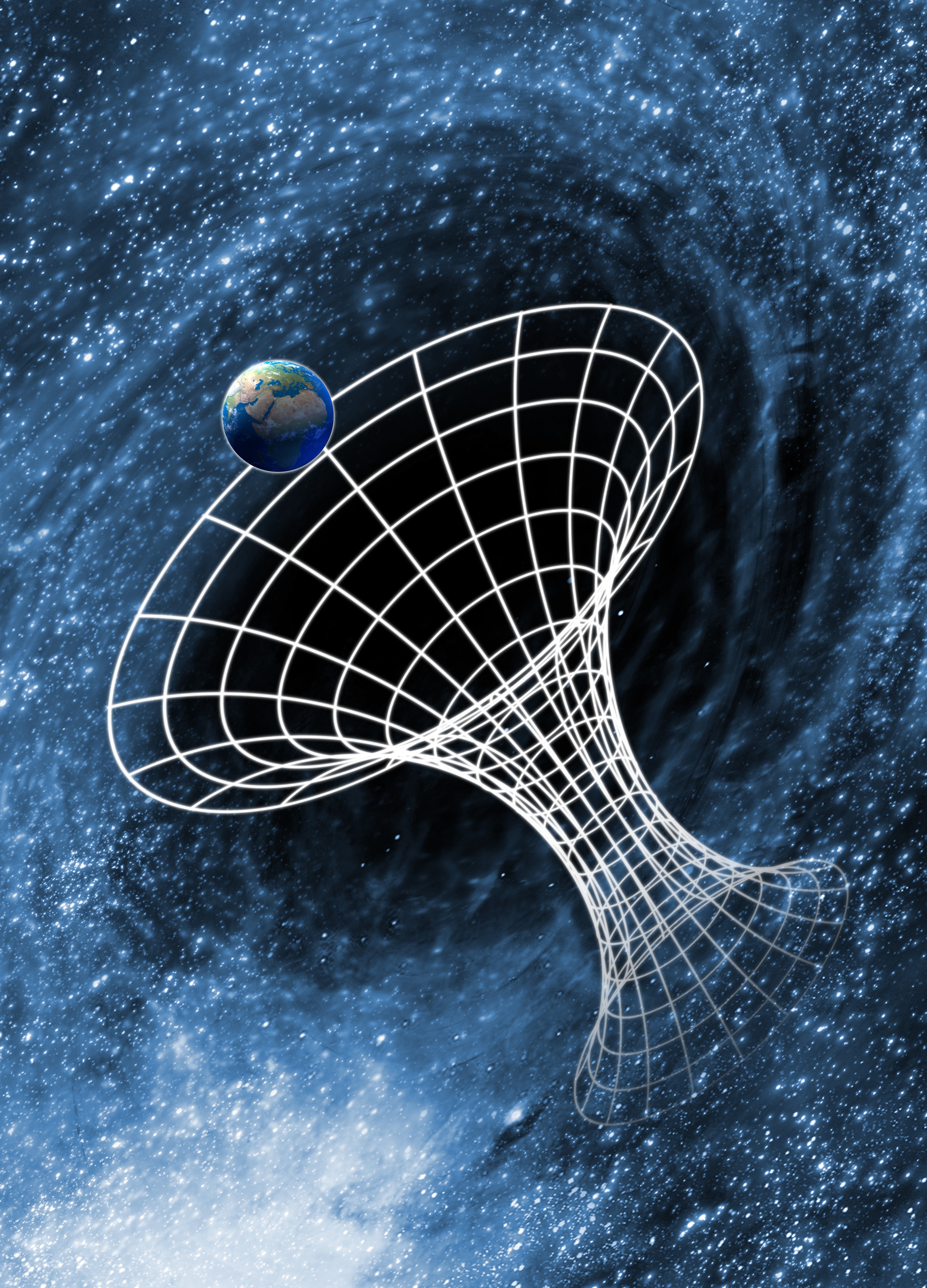Breakthrough wormhole simulation may unite quantum physics and general relativity
The breakthrough could suggest a way to study 'quantum gravity,' the missing link between quantum physics and Einstein's general relativity in the lab.

Scientists have devised a quantum experiment that allows them to study the dynamics of wormholes, theoretical spacetime entities that first emerged from Albert Einstein's 1915 theory of gravity, or general relativity.
Rather than creating an actual wormhole, a rip in time and space that is theorized to form a bridge between one distant region of space with another, the team built a wormhole model to run on a quantum processor. This allowed them to investigate the physics of wormholes and their potential connection to so-called 'quantum gravity.'
"We found a quantum system that exhibits key properties of a gravitational wormhole yet is sufficiently small to implement on today's quantum hardware," U.S. Department of Energy Office of Science research program Quantum Communication Channels for Fundamental Physics (QCCFP) principal investigator Maria Spiropulu, said in a statement. "This work constitutes a step toward a larger program of testing quantum gravity physics using a quantum computer."
Related: What Is Quantum Gravity?
Co-author Samantha Davis, a graduate student at Caltech, said in the statement that it took "a really long time to arrive at the results," and that the team was surprised by the outcome that suggests that wormhole-like behavior can be explained from the perspective of both quantum physics and general relativity.
Spiropulu, also the Shang-Yi Ch'en Professor of Physics at the California Institute of Technology, added that while this new model does not substitute for direct probes of quantum gravity, it does offer a powerful way to investigate ideas of quantum gravity in the lab.
Einstein's general relativity is the best description scientists have of the universe on truly massive scales, while quantum physics is the most accurate picture of the subatomic world. The problem is as robust as these two fields of physics have become since their inception at the beginning of the 20th century, they don't unite.
Get the Space.com Newsletter
Breaking space news, the latest updates on rocket launches, skywatching events and more!
This is because there is no description of gravity on the scale of quantum physics, and gravity, meanwhile, is the primary concern of general relativity. That makes the discovery of a 'quantum theory of gravity' a pressing concern for physicists and the key to a long-sought-after 'theory of everything' in physics.
The team's quantum-created wormhole could be a step in the right direction in this quest.
Scientists have been theorizing about wormholes ever since 1935 when Albert Einstein took his 1915 equations of general relativity and together with American-Israeli physicist Nathan Rosen described them as tunnels through the very fabric of spacetime.
Acquiring the moniker 'Einstein-Rosen Bridges,' these spacetime tunnels were later named wormholes by black hole expert John Wheeler in the 1950s.

In 2013, a connection was forged between wormholes and entanglement, the element of quantum physics that suggests two particles can be linked in such a way that changing one instantaneously changes the other no matter how far they are separated, even if they are located at opposite sides of the universe from one another.
Physicists Juan Maldacena and Leonard Susskind linked the two disparate worlds of general relativity and quantum physics when they theorized that wormholes were equivalent to entanglement in that both described a connection between distant areas of the universe. "It was a very daring and poetic idea," Spiropulu said.
In 2017, the idea put forward by Maldacena and Susskind was expanded upon by Harvard University physicist Daniel Jafferis, the co-lead author of this current research, and his colleagues.
They developed a concept in which negative repulsive energy holds a wormhole open long enough for something to pass through from one end to the other, thus creating a traversable wormhole.
The concept of a traversable wormhole was analogous to another feature of quantum physics, quantum teleportation, which uses the principles of entanglement to transport information across vast distances by using optical fiber or through the air.
This current research takes the potential connection between wormholes and quantum teleportation and explores it in greater detail as the Caltech-led team performs the first experiments that probe the idea that information traveling from one point in space to another can be described either using the language of gravity established by general relativity or by quantum entanglement — the language of quantum physics.
Read more: The hunt for wormholes: How scientists look for space-time tunnels

The team started work by developing a baby Sachdev–Ye–Kitaev (SYK) quantum system and entangling it with another SYK system, resulting in a model built to preserve gravitational properties.
This model was then reduced to a simplified form with machine learning on conventional computers after which the scientists could observe wormhole-like dynamics on Google's Sycamore quantum processor.
"We employed learning techniques to find and prepare a simple SYK-like quantum system that could be encoded in the current quantum architectures and that would preserve the gravitational properties," Spiropulu said. "In other words, we simplified the microscopic description of the SYK quantum system and studied the resulting effective model that we found on the quantum processor."
In the experiment, the team introduced a qubit, the basic unit of quantum computing equivalent to a standard bit in traditional computing, to one of the SYKs. They then watched as information emerged at the other SYK.
This meant that the information had traveled from one quantum system and emerged from another via quantum teleportation in the language of quantum physics. In the language of gravity, however, this replicated a journey through a traversable wormhole.
The key characteristics of a traversable wormhole were only manifested when the team attempted to prop open their model of a bridge in spacetime using pulses of repulsive negative energy. This reflects how real wormholes are expected to behave in the depths of space if they are ever found to exist.
The test performed by the team was the first experiment of its kind and was only made possible by using the high fidelity of Google's quantum processor.
"If the error rates were higher by 50 percent, the signal would have been entirely obscured. If they were half we would have 10 times the signal!" Spiropulu said. "It is curious and surprising how the optimization on one characteristic of the model preserved the other metrics. We have plans for more tests to get better insights on the model itself."
These future tests will involve moving the work over to even more complex quantum circuits — although the advent of full quantum computers may still be years from fruition.
"The relationship between quantum entanglement, spacetime, and quantum gravity is one of the most important questions in fundamental physics and an active area of theoretical research," Spiropulu concluded. "We are excited to take this small step toward testing these ideas on quantum hardware and will keep going."
The team's research will be published on Thursday (Dec. 1) in the journal Nature.
Follow us on Twitter @Spacedotcom or on Facebook.
Join our Space Forums to keep talking space on the latest missions, night sky and more! And if you have a news tip, correction or comment, let us know at: community@space.com.

Robert Lea is a science journalist in the U.K. whose articles have been published in Physics World, New Scientist, Astronomy Magazine, All About Space, Newsweek and ZME Science. He also writes about science communication for Elsevier and the European Journal of Physics. Rob holds a bachelor of science degree in physics and astronomy from the U.K.’s Open University. Follow him on Twitter @sciencef1rst.









